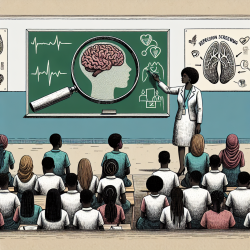Introduction
The rise of telehealth has transformed the landscape of healthcare, particularly in the realm of behavioral assessment and treatment for children with Autism Spectrum Disorder (ASD). The research article titled "Behavioral Assessment and Treatment via Telehealth for Children with Autism: From Local to Global Clinical Applications" provides a comprehensive analysis of the efficacy of telehealth in delivering Functional Analysis (FA) and Functional Communication Training (FCT) to children with ASD globally. This blog aims to distill key findings from the study to help practitioners enhance their telehealth practices and encourage further research in this burgeoning field.
Key Findings and Implications
The study evaluated the outcomes of the FA + FCT telehealth model across various global sites, involving 199 participants. The results were promising, showing that behavioral outcomes and parent acceptability were maintained at levels similar to previous studies conducted in the United States. The study also highlighted minimal differences in drop-out rates, visit cancellations, and technology issues across different project sites, indicating the robustness of the telehealth model.
Practical Applications for Practitioners
For practitioners, the study underscores several critical areas to focus on:
- Consistency in Outcomes: The FA + FCT model via telehealth has shown consistent effectiveness across various geographical locations. Practitioners should leverage this model to ensure that children with ASD receive high-quality behavioral interventions regardless of their location.
- Parent Involvement: High levels of parent procedural fidelity were observed, indicating that parents can effectively implement FA and FCT procedures with remote coaching. Practitioners should continue to engage parents actively in the treatment process to enhance outcomes.
- Addressing Technology Challenges: While technology issues were minimal, they still pose a barrier to effective service delivery. Practitioners should work on minimizing these issues by ensuring reliable internet connectivity and providing technical support to families.
Encouraging Further Research
The study opens avenues for further research in several areas:
- Expanding Participant Demographics: Most studies, including this one, focus on young children with ASD. Future research should include older individuals and those with different developmental diagnoses to broaden the applicability of telehealth interventions.
- Exploring Diverse Settings: While the home setting is common, exploring telehealth applications in schools, clinics, and community settings can provide insights into the model's versatility.
- Investigating Idiosyncratic Variables: Understanding the unique variables that affect functional analysis outcomes can help tailor interventions more effectively.
Conclusion
The FA + FCT telehealth model represents a significant advancement in providing accessible, effective behavioral interventions for children with ASD globally. By focusing on consistent outcomes, parent involvement, and minimizing technology challenges, practitioners can enhance their telehealth practices. Additionally, expanding research into diverse demographics and settings will further solidify telehealth's role in behavioral health.
To read the original research paper, please follow this link: Behavioral Assessment and Treatment via Telehealth for Children with Autism: From Local to Global Clinical Applications.










